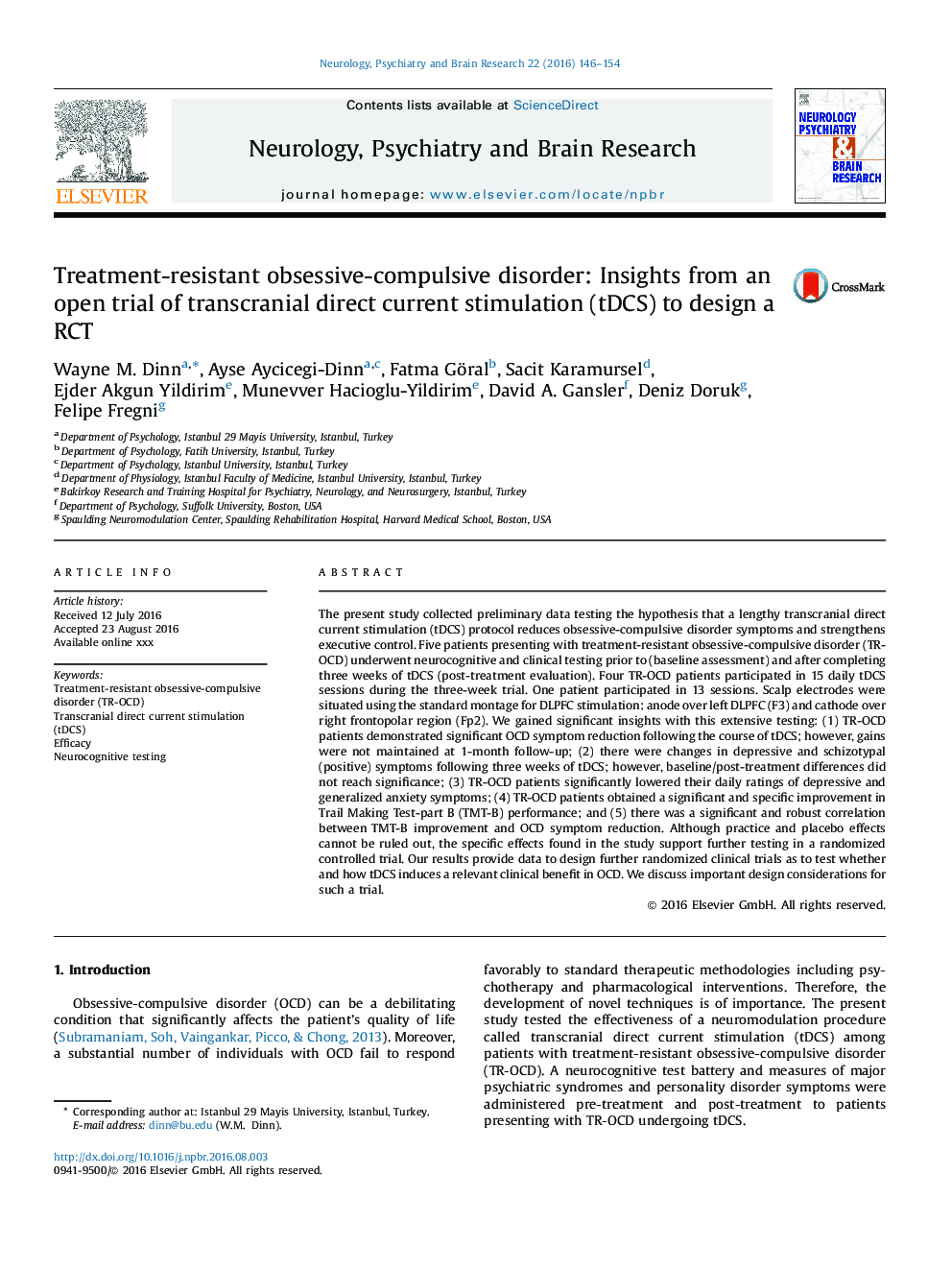| کد مقاله | کد نشریه | سال انتشار | مقاله انگلیسی | نسخه تمام متن |
|---|---|---|---|---|
| 4188237 | 1608284 | 2016 | 9 صفحه PDF | دانلود رایگان |

The present study collected preliminary data testing the hypothesis that a lengthy transcranial direct current stimulation (tDCS) protocol reduces obsessive-compulsive disorder symptoms and strengthens executive control. Five patients presenting with treatment-resistant obsessive-compulsive disorder (TR-OCD) underwent neurocognitive and clinical testing prior to (baseline assessment) and after completing three weeks of tDCS (post-treatment evaluation). Four TR-OCD patients participated in 15 daily tDCS sessions during the three-week trial. One patient participated in 13 sessions. Scalp electrodes were situated using the standard montage for DLPFC stimulation: anode over left DLPFC (F3) and cathode over right frontopolar region (Fp2). We gained significant insights with this extensive testing: (1) TR-OCD patients demonstrated significant OCD symptom reduction following the course of tDCS; however, gains were not maintained at 1-month follow-up; (2) there were changes in depressive and schizotypal (positive) symptoms following three weeks of tDCS; however, baseline/post-treatment differences did not reach significance; (3) TR-OCD patients significantly lowered their daily ratings of depressive and generalized anxiety symptoms; (4) TR-OCD patients obtained a significant and specific improvement in Trail Making Test-part B (TMT-B) performance; and (5) there was a significant and robust correlation between TMT-B improvement and OCD symptom reduction. Although practice and placebo effects cannot be ruled out, the specific effects found in the study support further testing in a randomized controlled trial. Our results provide data to design further randomized clinical trials as to test whether and how tDCS induces a relevant clinical benefit in OCD. We discuss important design considerations for such a trial.
Journal: Neurology, Psychiatry and Brain Research - Volume 22, Issues 3–4, December 2016, Pages 146–154